For the industrial electricity industry and some other fields, distribution transformers are an indispensable device. So to better understand this device, today we will teach you about the concept, structure and basic classification of this transformer type.
1. What is a Distribution Transformer ?
A distribution transformer or service transformer is a type of transformers that provides a final voltage transformation in the electric power distribution system, stepping down the voltage used in the distribution lines to the level used by the customer.
If mounted on a utility pole, they are called pole-mount distribution transformers. If the distribution lines are located at ground level or underground, distribution transformers are mounted on concrete pads and locked in steel cases, thus known as pad-mount transformers. The other distribution transformers type, being the most common around the world, are ground-mount types.
Distribution transformers normally have ratings less than 200 kVA, although some national standards can allow for units up to 5000 kVA to be described as distribution transformers. Since distribution transformers are energized for 24 hours a day (even when they don't carry any load), reducing iron losses has an important role in their design. As they usually don't operate at full load, they are designed to have maximum efficiency at lower loads. To have a better efficiency, voltage regulation in these transformers should be kept to a minimum. Hence, they are designed to have small leakage reactance.
Components of a distribution transformer
These are the basic components of a distribution transformer:
1. Laminated core
2. Windings
3. Insulating materials
4. Bushing
5. Transformer oil
6. Oil Conservator
7. Breather
8. Off-load Tap changer
9. Radiators
10. Buchholz Relay
Of the above, laminated soft iron core, windings, insulating material, bushings, oil are the primary parts and are present in all distribution transformers, whereas the rest can be seen only in transformers with a capacity of more than 2500 kVA.
Core
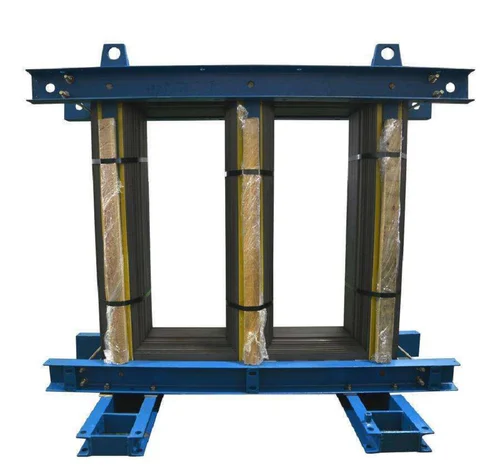
The core acts as a support to the winding in the distribution transformer. It also provides a low reluctance path to the flow of magnetic flux. It is made of laminated soft iron core in order to reduce eddy current loss and Hysteresis loss. The composition of a distribution transformer core depends on factors such as voltage, current, and frequency. The diameter of the transformer core is directly proportional to copper loss and is inversely proportional to iron loss. If the diameter of the core is decreased, the weight of the steel in the core is reduced, which leads to less core loss of the distribution transformer and the copper loss increases. When the diameter of the core is increased, the opposite occurs.
Winding
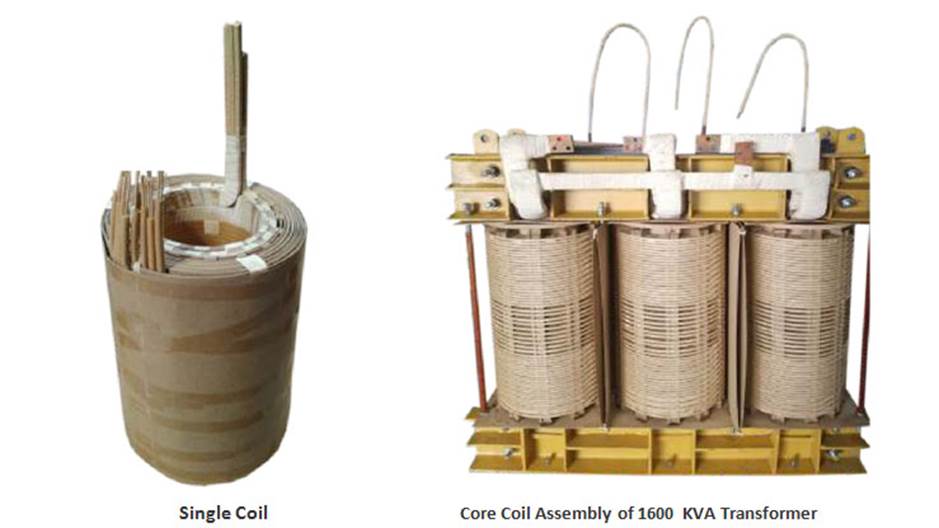
Two sets of winding are made over the distribution transformer core and are insulated from each other. Winding consists of several turns of copper conductors bundled together and connected in series.
Winding can be classified in two different ways:
- Based on the input and output supply
- Based on the voltage range
Within the input/output supply classification, winding is further categorized:
- Primary winding – These are the windings to which the input voltage is applied.
- Secondary winding – These are the windings to which the output voltage is applied.
Most distribution transformer will have copper windings since it has high conductivity. This minimizes losses as well as the amount of copper needed for the winding (volume and weight of winding). Moreover, copper has high ductility, which means it is easy to bend conductors into tight windings around the transformer's core. Therefore, it helps minimizing the amount of copper needed as well as the overall volume of the winding.
Bushing
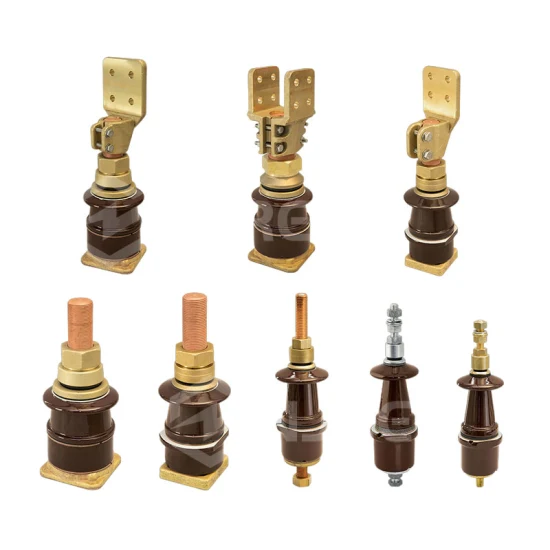
In any distribution transformers, bushing are hollow electrical insulators that allow an electrical conductor to pass safely through a conducting barrier such as the case of a transformer or circuit breaker without making electrical contact with them. They are typically made from porcelain, though other insulating materials are also used.
All materials carrying an electric charge generate an electric field. When an energized conductor is near a material at earth potential, it can form very high field strengths, especially where the field lines are forced to curve sharply around the earthed material. Therefore, bushings work is to control the shape and strength of the field and reduces the electrical stresses in the insulating material.
Insulating Materials
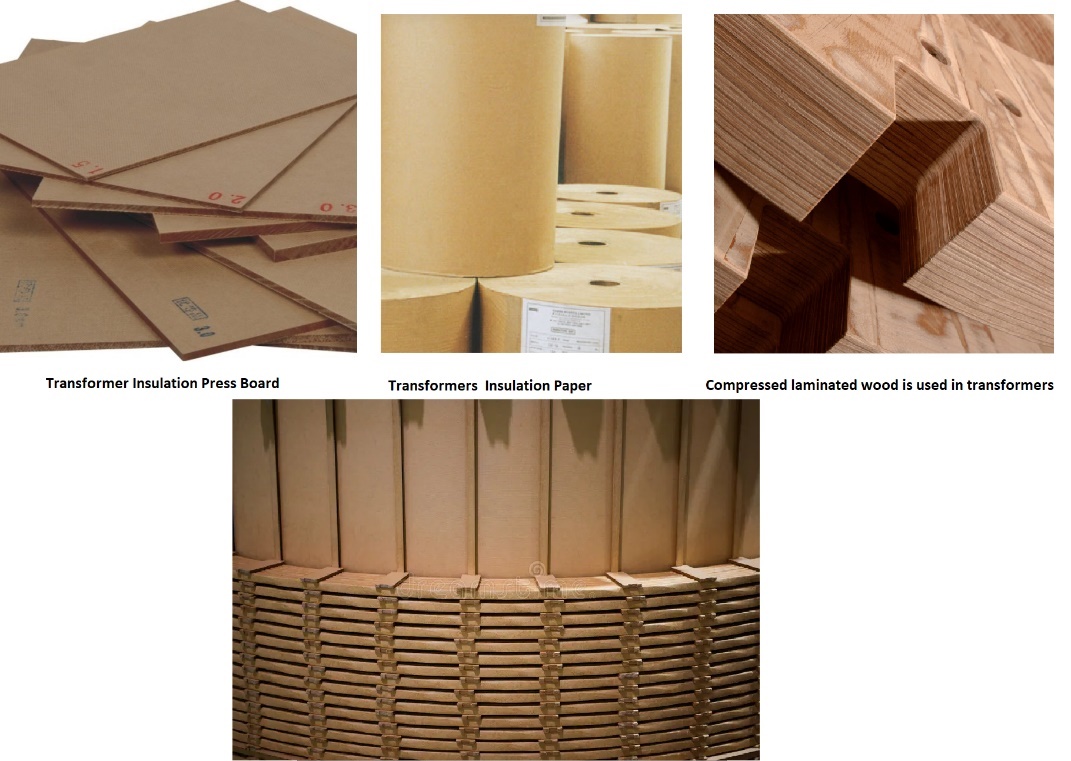
Insulating paper and cardboard are used in distribution transformers to isolate primary and secondary winding from each other and from the transformer core.
Transformer Oil

Transformer oil is another insulating material. Transformer oil performs two important functions: in addition to the insulating function, it can also cool the core and coil assembly. The distribution transformer's core and winding must be completely immersed in the oil. Normally, hydrocarbon mineral oils are used as transformer oil. Based on the color of the oil, the users can know when to change it.
Oil contamination is a serious problem because contamination robs the oil of its dielectric properties and renders it useless as an insulating medium.
Conservator
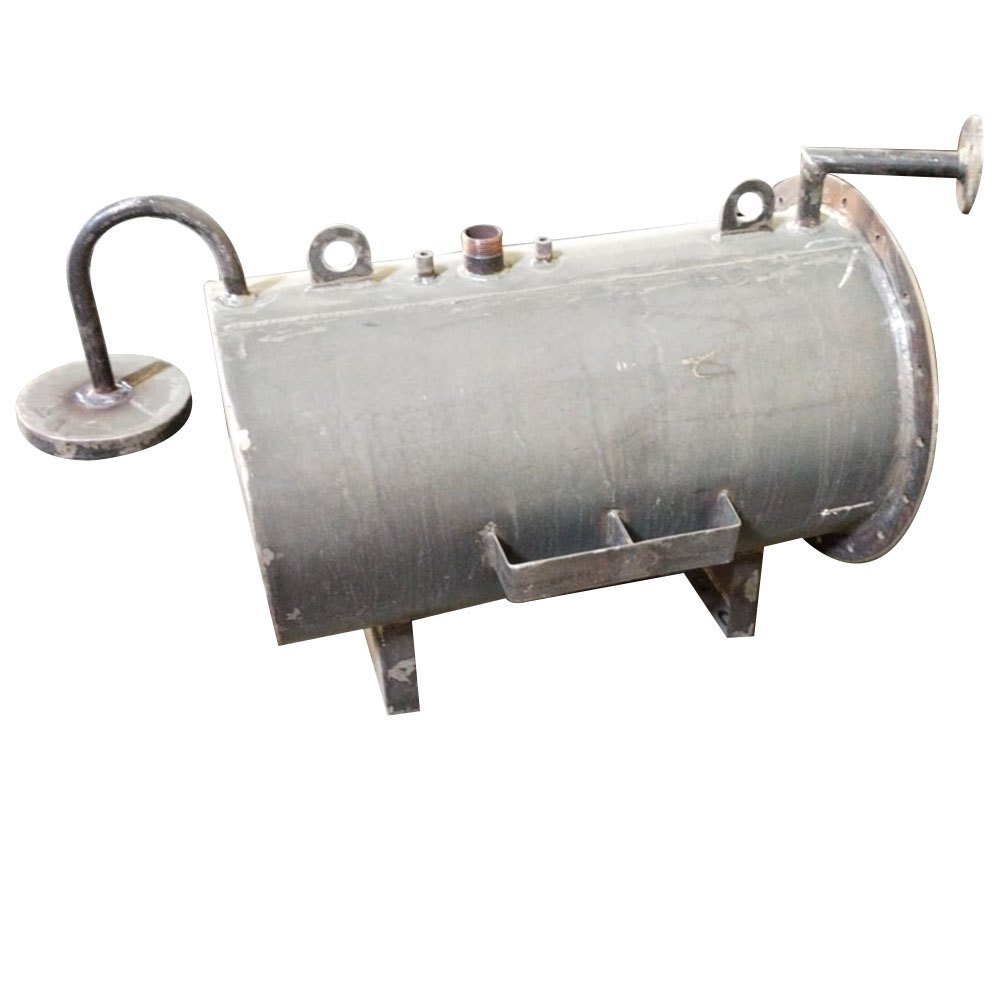
The conservator conserves the transformer oil. It is an airtight, metallic, cylindrical drum that is fitted above the transformer. The conservator tank is vented to the atmosphere at the top, and the normal oil level is approximately in the middle of the conservator to allow the oil to expand and contract as the temperature varies. The conservator is connected to the main tank inside the transformer, which is completely filled with transformer oil through a pipeline.
Breather
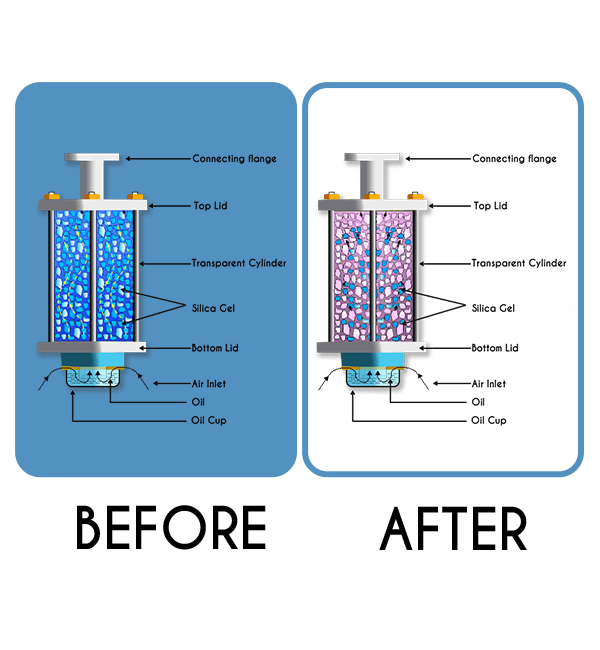
The breather controls the moisture level in the distribution transformer. Moisture can arise when temperature variations cause expansion and contraction of the insulating oil, which then causes the pressure to change inside the conservator. Pressure changes are balanced by a flow of atmospheric air in and out of the conservator, which is how moisture can enter the system.
If the insulating oil encounters moisture, it can affect the paper insulation or may even lead to internal faults. Therefore, it is necessary that the air entering the tank is moisture-free.
The transformer's breather is a cylindrical container that is filled with silica gel. When the atmospheric air passes through the silica gel of the breather, the air's moisture is absorbed by the silica crystals. The breather acts like an air filter for the distribution transformer and controls the moisture level inside the transformer. It is connected to the end of the breather pipe.
Tap Changer

The output voltage of distribution transformers varies according to their input voltage and the load. During loaded conditions, the voltage on the output terminal decreases, whereas during off-load conditions, the output voltage increases. In order to balance the voltage variations, tap changers are used. Tap changers can be either on-load tap changers or off-load tap changers. In an on-load tap changer, the tapping can be changed without isolating the transformer from the supply. In an off-load tap changer, it is done after disconnecting the transformer. Automatic tap changers are also available.
Radiators
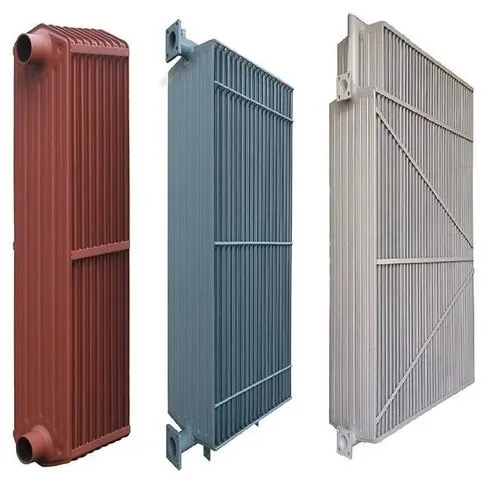
Radiators are used to cool the transformer oil. The transformer oil is circulated through the Radiators. The circulation of the oil may either be natural or forced. In natural circulation, when the temperature of the oil rises, the hot oil naturally rises to the top, and the cold oil sinks downward so that the oil could naturally circulate through the radiators. In forced circulation, an external pump is used to circulate the oil (which mostly used for power transformer).
Buchholz Relay
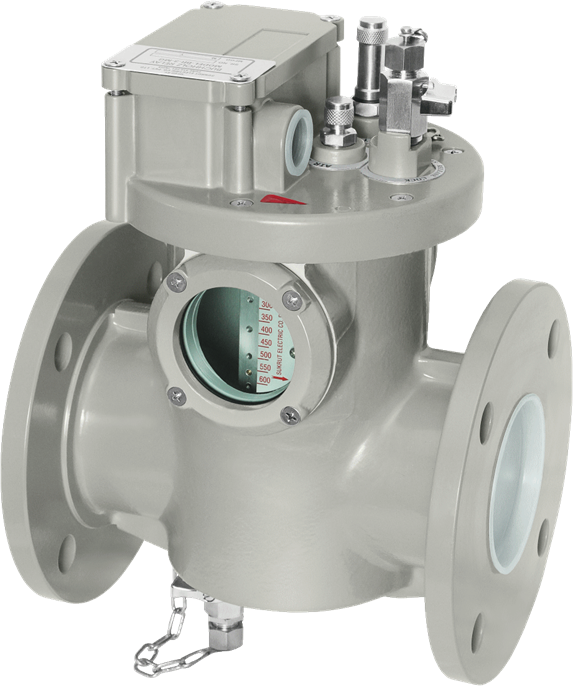
The Buchholz Relay is a protective device container housed over the connecting pipe from the main tank to the conservator tank. It is used to sense the faults occurring inside the distribution transformer. It is a simple relay that is operated by the gases emitted during the decomposition of transformer oil during internal faults. It helps in sensing and protecting the transformer from internal faults.
Conclusion
Through this article, readers can understand quite a bit about the definition and structure of transformers.
If you want to know more about distribution transformer or actually want to buy one, please ontact +0986 484 554 (via WhatsApp) or visit our website www.Sanaky-vn.com for free consultation and the most preferential quote. With the business motto: "Leading Manufacturing and Technology", customers coming to SANAKY will always receive highest quality products, reasonable prices, fastest delivery time and best warranty service.
--------------------------------------------------------------------------------------------------------------------------------
SANAKY VIETNAM., CO LTD - Manufacturer of Chest Freezer - Upright Cooler, Transformer, RO Water Purifier...
☎ Hotline: (+84) 986 484 554
Email: hank@sanaky-vn.com
Website: www.sanaky-vn.com
 Vietnamese
Vietnamese  English
English  Chinese
Chinese  French
French  Spanish
Spanish  Russian
Russian  Arabic
Arabic  Portuguese
Portuguese